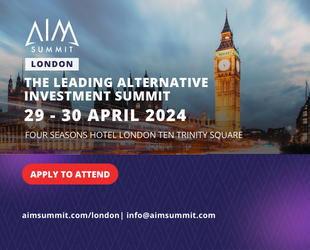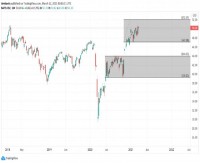|
|
Opalesque Industry Update - Commonfund Institute has released its latest white paper, “From SRI to ESG: Changing the World of Responsible Investing” by John S. Griswold, Executive Director, William F. Jarvis, Managing Director, and Commonfund’s Assistant General Counsel, Lauren Caplan,. The three authors are members of Commonfund’s PRI Task Force, with Caplan also a member of the Advisory Council of The Sustainability Accounting Standards Board™. The authors show that responsible investing is more than a passing trend. They provide a guide to responsible investing for governing boards and committees who are considering whether and how to integrate environmental, social and governance factors into their investment process.
The paper reviews the principal categories and history of responsible investing, and discusses why socially-responsible investing (SRI), environmental, social and governance investing (ESG), mission-related investing and impact investing -- have grown in importance for institutional investors; the fundamental arguments for and against ESG for long-term fiduciaries; and the impact ESG has on their institutions. It shows that ESG implementation does not need to be an all-or-nothing decision. Rather, a sliding scale of engagement is available for institutions that decide to explore ESG issues. According to a recent report, the responsible investing market in the U.S. was estimated at year end 2012 to have $3.74 trillion in assets under management, representing 11.2 percent of the $33.3 trillion total assets under management in the U.S.
The white paper, which may be downloaded by clicking here, analyzes issues including:
- The different approaches and purposes of socially responsible investing (SRI), impact investing, and environmental, social and governance (ESG).
- The responsible investing landscape is changing. Responsible investing has moved from a practice of negative screening and exclusion of certain types of investment to one seeking or encouraging certain characteristics in portfolio companies.
- One study showed that the concept of ESG investing has taken a long time to gain acceptance because it was historically associated with exclusionary investing (i.e., negative screens) rather than with positive or best-in-class investing.
- SRI was for a long time the most widely-used of the three approaches. Although SRI’s negative screening can be a useful tool for institutions desiring to express ethical, religious or moral values through their investment portfolio, for many it may prove too restrictive since SRI limits the range of securities available for investment.
- ESG analysis takes a broader view than SRI; it examines whether environmental, social and governance issues may be material to a company’s performance, and therefore to the investment performance of a long-term portfolio.
- Whether a portfolio’s long-term performance can be enhanced by including environmental, social and governance (ESG) considerations in the security selection process. Preliminary studies suggest that while integrating ESG issues into fundamental investment analysis procedures can improve investment performance, it is too early to draw comprehensive conclusions.
- ESG data being reported by companies is of varying quality. The lack of the consistent standards or reporting methods makes it difficult for investors to compare investments with confidence. Users of ESG data are continuing to call for more standardized reporting mechanisms to improve the quality of data that is at the heart of any analysis of risk and materiality.
- ESG risk factors affect company performance over the long-term. Managers and investors hoping to gain a competitive advantage by adding sustainability practices to an organization’s strategy appear unlikely to obtain short-term outperformance. But how long is the long term? Different analysts have different perspectives on how long it takes to confirm an impact from ESG risk factors.
- Whether ESG investing is compatible with fiduciaries’ legal duties of care, loyalty and responsibility.
- Is ESG practice compatible with the Uniform Prudent Management of Institutional Funds Act (UPMIFA)? The Uniform Prudent Management of Institutional Funds Act (UPMIFA), which establishes uniform standards for the management, investment and expenditure of donor-restricted funds, has implications for ESG investment practices. UPMIFA is sympathetic to investment practices that include environmental – or, more specifically, sustainability – analysis and that also place a premium on good governance.
- ESG investing practices have traditionally been applied most broadly to publicly traded equities. The broad category of alternative investments – marketable alternatives (hedge funds), private equity, venture capital, natural resources, commodities, real estate, and distressed debt, among others – pose challenges to traditional ESG analytical methods because of the relatively opaque nature of their investment processes.
- The 2012 NACUBO-Commonfund Study of Endowments (NCSE) reported that among U.S. institutions of higher education, 18 percent of the 831 responding institutions used at least one of the ESG criteria in managing their portfolios.
- Among U.S. public and private foundations, the 2012 Commonfund Benchmarks Study of Foundations reported that use of ESG criteria is more limited, with only nine percent of responding institutions saying that they use ESG in their investing process.
- Whether or not a particular institution decides to add ESG practice to its investment toolkit, fiduciaries will need to bear in mind its presence and, potentially, its increasing influence and visibility.
Commonfund
Press Release
BM
|





 RSS
RSS







